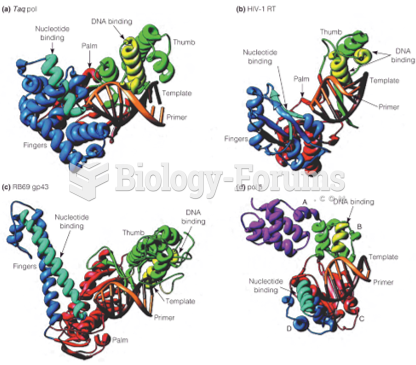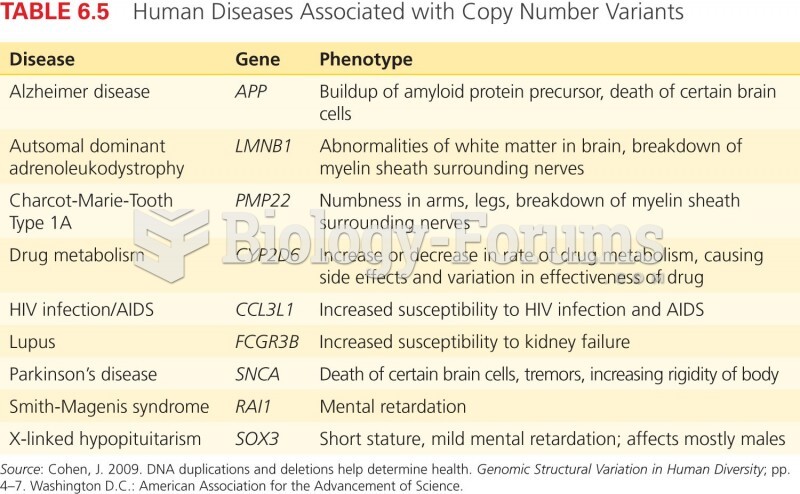|
|
|
It is important to read food labels and choose foods with low cholesterol and saturated trans fat. You should limit saturated fat to no higher than 6% of daily calories.
A strange skin disease referred to as Morgellons has occurred in the southern United States and in California. Symptoms include slowly healing sores, joint pain, persistent fatigue, and a sensation of things crawling through the skin. Another symptom is strange-looking, threadlike extrusions coming out of the skin.
Drying your hands with a paper towel will reduce the bacterial count on your hands by 45–60%.
When blood is exposed to air, it clots. Heparin allows the blood to come in direct contact with air without clotting.
The calories found in one piece of cherry cheesecake could light a 60-watt light bulb for 1.5 hours.







